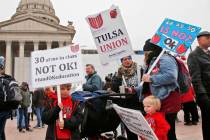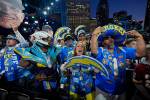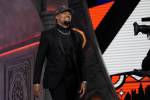‘Lost Symbol’ offers interesting food for thought
 I have to say right off the bat that a lot of readers apparently didn’t like “The Lost Symbol” by Dan Brown. Maybe their expectations were too high after “The Da Vinci Code.”
I have to say right off the bat that a lot of readers apparently didn’t like “The Lost Symbol” by Dan Brown. Maybe their expectations were too high after “The Da Vinci Code.”
For me, “The Lost Symbol” was a pure joy to read. I understand that people often view things differently, but I’m amazed by the sheer outrage this book seems to have stirred up during the past year.
Anyway, “The Lost Symbol,” now out in paperback, takes place in Washington, D.C., and has Paul Langdon trying to save the life of his close friend, Peter Solomon, while attempting to unravel the hidden codes of the Freemasons and the effect they had on the founding of our nation. Sounds interesting, doesn’t it?
When Langdon is asked by an old friend/mentor to give a lecture in Washington, D.C., at the spur of the moment, he agrees and flies to the nation’s capital from Boston. Once he reaches the Capitol, Langdon quickly discovers something is wrong and that he’s been duped by a clever impostor who calls himself Ma’lak.
Ma’lak is a giant of man, his muscled body tattooed with archaic symbols. He’s also intelligent, rich and seeking the hidden portal that supposedly leads to enlightenment and is discussed in the ancient doctrines of Freemasonry. He firmly believes the portal is hidden somewhere in Washington.
Ma’lak has threatened to kill Solomon if Langdon doesn’t assist him in locating the portal by midnight. To prove how serious he is about finding it, Ma’lak has left Solomon’s severed hand lying on the floor of the Capitol with clues to help Langdon along in his quest. Langdon, however, must deal with a CIA section’s chief, seeking to stop Ma’lak in achieving his goal, believing the results will tear the country apart.
Langdon doesn’t know what to think because all is not what it seems. It doesn’t take long for him to realize he doesn’t know whom to trust. With the clock ticking, our Harvard professor races to unlock the secrets of our founding fathers and to find a portal that may exist or may not. If it does, then it will offer the answers to the ancient mysteries of mankind.
At the beginning of the book, the author clearly states that the scientific research he discusses in his novel is actually being carried out today. I just recently had a debate with someone who stated “The Lost Symbol” was nothing but fiction and had no basis in reality. I totally disagreed.
Though I don’t have a background in science, I do try to stay abreast of the current research in quantum physics, astronomy, and the understanding of the human mind in its relationship to the universe. I’ve also followed many of the discoveries in the area of noetic sciences throughout the past 25 years. What’s discussed in “The Lost Symbol” blew me away with its authenticity and how it’s carefully woven into the plot. This is part of the reason why the book is so entertaining.
If anyone out there has the slightest interest in man’s quest to understand his place in the universe, then check this book out for some interesting food for thought. On top of that, it’s also a good read that has each chapter ending with a twist that compels the reader to go on to the next one. “The Lost Symbol” is certainly one of the best books I’ve read in the past decade, and I highly recommend it.
Buy the book, read it with an open mind, and you might walk away from it like I did, saying, “Wow!”
Wayne C. Rogers is the author of the horror novellas “The Encounter” and “The Tunnels,” both of which can be purchased at Amazon’s Kindle Store for 99 cents each.

















